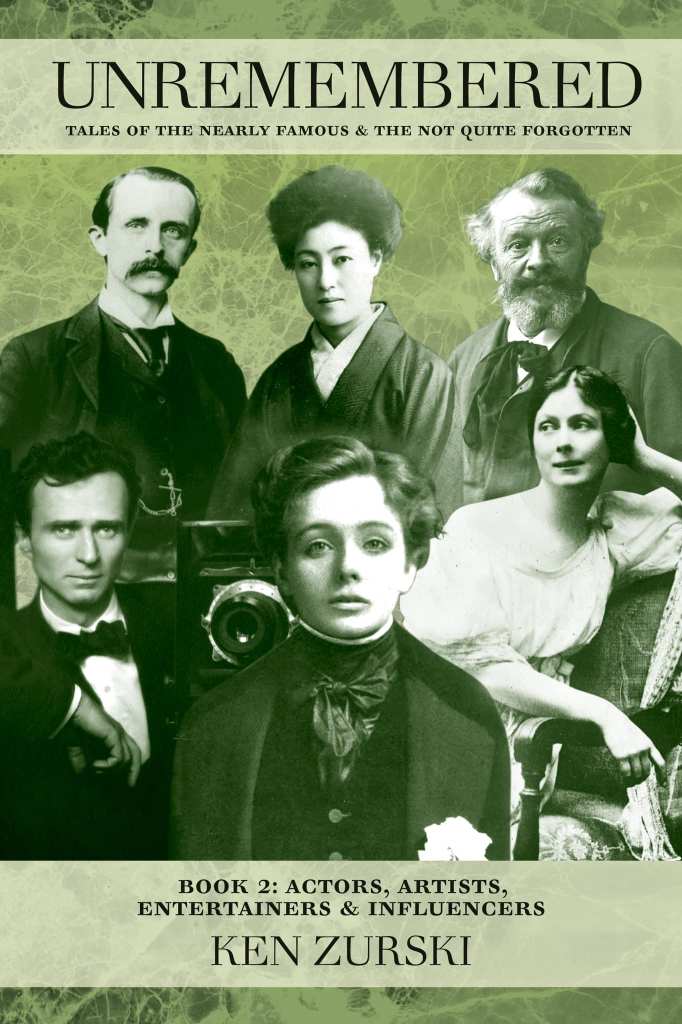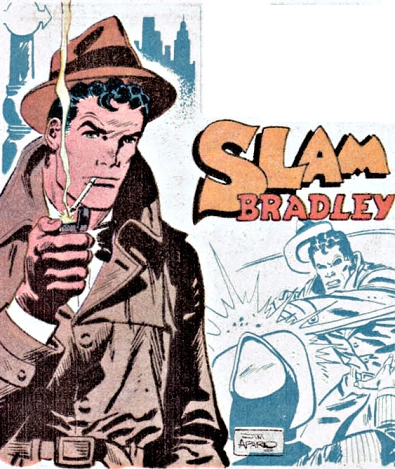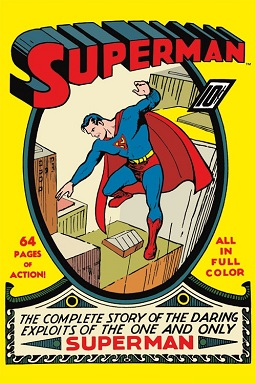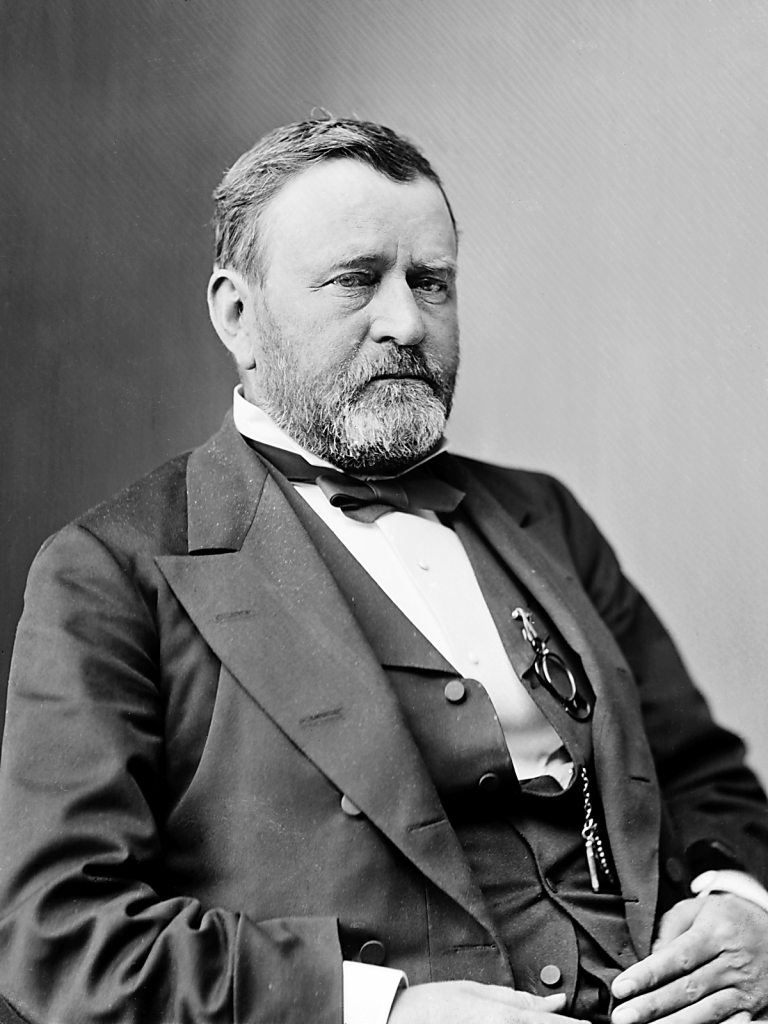Uncategorized
Historically – and Tragically – April 15 is More Than Just Tax Day
By Ken Zurski
Tax Day, April 15, used to be a big deal.
That’s because years before the internet and e-filing made doing your taxes more convenient, those who owed taxes ostensibly waited until the end of the last day to file their returns.
For some it was symbolic, even if you were due a refund.
So local post offices prepared for the onslaught.
In larger cities smiling postal employees set up a drive through service to allow the so-called “procrastinators” to pull up and simply drop off their returns without even getting out of their vehicles.
But today, because it’s easier to file returns online, the absurdity of dropping tax returns off at the last minute seems pointless. So the colloquial term Tax Day, or April 15, just doesn’t have the same impact as it did years ago.
But historically, the date of April 15 is known for two tragic events.
More recently, in 2013, the Boston Marathon bombing occurred on April 15. The other is from 1912, ironically a year before there was a federal income tax. In that year, on that fateful April day, an ocean liner, the largest of its kind for the day, sank after striking an iceberg in the Atlantic Ocean. “A Night to Remember” as author Walter Lord famously put it is his book about the tragedy.
Yes, the sinking of the Titanic was on April 15.
Additionally, President Abraham Lincoln officially died on April 15, 1865 a day after being shot by John Wilkes Booth at Ford’s Theater.
Understandably, because of its significance for all Americans, April 15, is more associated with taxes, than tragedy. But even the date itself isn’t always ceremonially the last day to file taxes. If the 15th day of April is on a weekend, then the following Monday and Tuesday, either the 16th or 17th, is designated as the national day of filing. And today, if you don’t get your taxes in by the deadline date, just go online and file an automatic extension. Anybody can do it.
So much for a designated Tax Day.
Maybe it’s time to give April 15, the date, back to history:
Remember the Titanic!
Boston Strong!
Courier Newspapers Feature Ken Zurski’s Latest ‘Unremembered’ Book
Local author Ken Zurski releases ‘UNREMEMBERED’ sequel
By Madelyn Norman from Courier newspapers
Ellen Terry. Charles Klein. Gaby Deslys. These are names you probably haven’t heard, with stories you won’t forget. In Ken Zurski’s latest “UNREMEMBERED Book 2: Actors, Artists, Entertainers & Influencers,” he shares the history of souls that made all the difference, but go rather unnoticed.
In his sequel, published in September, Zurski shares the attempts and accomplishments of people in the entertainment industry between the late 19th and early 20th centuries.
The “UNREMEMBERED” series first began as a blog, unrememberedhistory.com, which now has over 200 stories of forgotten people throughout history. Zurski realized he was able to intertwine these stories in the form of a nonfiction book, utilizing records of the past.
“I wanted to find a story where I could connect things together,” he said. “We have history to tell because someone else told it before.”
As the author of four books, Zurski has been sharing history since his first book, “The Wreck of the Columbia,” which was published in 2012. As a resident of Morton, Illinois, he loves telling regional stories that made a lasting impact on the people reading them. “UNREMEMBERED” allowed Zurski to branch out into global storytelling.
The prevalence of digital databases and online resources allowed Zurski to gather information at a much quicker rate, which made writing the “UNREMEMBERED” books more enjoyable.
“Research has become much more advanced–thank goodness,” Zurski said. “When I wrote ‘The Wreck of Columbia’ I was at the Peoria and Pekin libraries for days on end, going through their newspaper archives.”
Although researching and writing is a time-consuming process, Zurski wouldn’t trade it for anything.
“It’s really my joy, just writing books and sharing them,” he said.
Since “UNREMEMBERED Book 2” is centered around people that most readers are unfamiliar with, Zurski has a recommendation for the best way to read his book.
“Look at the back of the book first and see if you recognize any names,” Zurski said. “Read the book. Come back to it–and you’ll have all of these stories.”
Visit amazon.com or amikapress.com to purchase a copy of “UNREMEMBERED Book 2: Actors, Artists, Entertainers & Influencers.”
A Book and a Bear Claw
A Book and a Bear Claw.
By Bill Thill
Ken Zurski‘s latest book, “Unremembered – Book 2: Actors, Artists, Entertainers & Influencers” is available for purchase and set to street today, Monday 9-19-22.
It’s a brilliant piece of work.
Ken’s concept for “Unremembered” was to tell “Tales of the nearly famous and the not quite forgotten” and in this book he focuses on a key group of artists in the early part of the twentieth century, a time of prodigious creative output both here in America and in Europe.
If our current entertainment landscape did in fact have a genesis moment, the life and times of the people chronicled here are likely a big part of it.
Dancer Isadora Duncan, theatrical producer Charles Frohman (one of the men who built Broadway), the French sculptor Rodin, J.M. Barrie (the man who wrote Peter Pan), Maude Adams (the actress who played the part), Paris Singer (an unabashed pursuer of the ladies and scion of sewing machine wealth), Kathleen Bruce (an artist who would come to high social standing), the explorer of the antarctic Captain Robert Scott, Mary Desti (a woman who fled a harsh reality, taking her son, a future Academy Award winner, to a better life) are just a handful of the real-life characters that fill the book’s 249 pages.
The dreamers and doers of the era seemed to criss-cross the Atlantic with such regularity that, for the first time in history, the intersection of bold artistic ideas and the crossing of cultural and political boundaries created a new tapestry of shared entertainment experiences. That along with the the emergence of a more rapid style of hot-take celebrity journalism combined to create an environment where the subjects of the book became part of something that had never before existed; a tapestry of personalities that strongly influenced culture through the arts.
Whether this was purposeful on the part of the true life characters that make up the stories in the book, or an inadvertent result of their creative journey, is left for the reader to decide. What is clear is that Ken’s subtitle of “Actors, Artists, Entertainers and Influencers” uses that fourth descriptor of “Influencer” as a way of drawing a straight line from today, back more than 100 years ago, to a time when the modern definition of such a personality, sans the term, could be said to have emerged.
Then, as with today, fire creates both light and heat and we, as the mass audience, are inexorably drawn to both. The stories in the book inevitably draw the reader to a conclusion that is almost as unsettling as it is obvious. These people, our predecessors in possession big dreams, wide fame and broad cultural impact, are kindred souls to many of us today whether or not you work in the arts or entertainment.
Breathing life into the sometimes forgotten past can be unsettling because it tears at a bias regarding our place in the world. It’s a natural and common bias that exists within each of us due to the fact that our world didn’t begin until the day we were born. By direct experience of the here and now it is only our lives that are filled with the bright colors of each new day. We witness and interpret our existence in “real” and immediate time and are faced with the promise, mystery and potential peril of all that is yet to occur.
From such a perspective everything that came before our grand existence is, by default, foreign to us. The language, the wardrobe, the technology and all that goes with those from whom we are a century advanced in calendar time is, in a temporal sense, antiquated and therefore inert. Such thinking elevates the here and now to an exalted position. After all, when we read histories, remembered or not, we often know how the stories and the fates of of our players will end. What could be more godlike than that?
Ken Zurski’s great gift as a storyteller is that he presents as a chronicler of personal histories that have been muted by the veil time. Once the reader is drawn in, however, we are surrounded by the flesh and blood of his subjects, their plots and passions, their loves and losses, the very fire of their lives which leads us to a renewed but once again shocking realization that some very significant parts of everything we consider to be our unique reality has been forged by all that came before. Much of our “here” stands on the foundation built by those who well preceded us and our “now” is more fleeting and borrowed than we might comfortably wish to comprehend within the daily practice of our lives.
Whether or not you work in entertainment or the media, in some cases, the individuals profiled in “Unremembered: Book 2” may be the exact people who built the foundation on which many of your “original thoughts” now stand. Acknowledging the true scope of history, while ultimately life affirming, is not for the timid.
That being said, I had difficulty with the final handful of chapters in this book.
First a bit about author Ken Zurski. Ken is a media professional who has made his living in the field of communications. He’s been a daily radio presence in the Midwest for several decades now. My favorite anecdote about Ken is that in his earliest days on big stick radio in Chicago he was known, on air, as Grant Parke. No, not like the park with the big fountain in the middle of the Loop Grant Park, of course not. Mind the “e” at the end of that name! Meanwhile, Chicago radio is nothing if not “broad shouldered” in the art of equally broad, tongue firmly in cheek, comedy and commentary.
For Ken to have been professionally birthed in such an environment and to observe, on a daily basis, the ebb and flow of his industry has, no doubt, enhanced his gifts as a storyteller. What’s fascinating about Ken’s journey is that he’s managed to merge his instinct for journalistic inquiry with the desire to tell campfire stories that have never before been told.
A few years ago, I told Ken outright that what he was doing as a storyteller would soon cause the world to beat a path to his door. With a series like “Unremembered” Ken is not only doing a great job of telling the stories but he’s also gathered the wood and sparked the flame. The History Channel has recently reached out to Ken and he’s already on his way to another chapter in his own evolving story. I think he’d appreciate it if you friended him on Facebook and followed along. For Ken there are many good things yet to come.
Now, for the sake of balance, let me explain my troubles with the last few chapters of “Unremembered Book 2: Actors, Artists, Entertainers & Influencers.”
Many things in life can bring us pleasure, a cup of coffee on an overcast day, a glazed bear claw that’s bigger than a plate, a good book that’s so well written, alive with characters and full of information that’s new to us that it’s hard to put down. I’ve experienced all of these things since Ken gifted me the opportunity to read his book weeks before it went into wide release. However, I am also a dyed in the wool gratification delayer and therein lies the rub.
I only took a bite of the bear claw because there is no way I was going to indulge to the finish anything that would counteract my recent workouts. I just sipped at the coffee, until it grew cold, mindful that too much caffeine is not my friend. And, just days before I snapped the photo beneath this post, I had stopped reading Ken’s book a few dozen pages short of the finish.
I tend to savor what I enjoy by invoking moderation or by slowing down their inevitable conclusion. I didn’t want the boat to sink. I didn’t want the expedition to fail. I wanted the children to grow and live to tell their own stories and I sure as hell didn’t want that car to drive off while her long scarf was anywhere near its spoked wheels. I didn’t want this book to end.
I read the final pages of “Unremembered” apart from the rest. I savored them. I knew I would have to because of my innate yearning for the show to go on. Because, you see, the show must always go on.
The actors, artists, entertainers and influencers brought back to life by Ken’s brilliant work are no doubt smiling down on the man who, more than a century later, has given them another curtain call. The irony of “Unremembered” is that you won’t soon forget it.
If you’d like to purchase Ken’s book I’ll place a link in the comments. Show people should definitely read this book and suggest it for the shelves of their favorite bookstore. You’ll quickly recognize the “sliding doors” effect of your own creative journey and of all the things that only exist, in the particular way they do, because of your personal contribution.
Congratulations, Ken! I thoroughly enjoyed the read.
Bill Thill is a producer, director, writer & industry podcaster based in Santa Monica, California
I Am Superman
By Ken Zurski
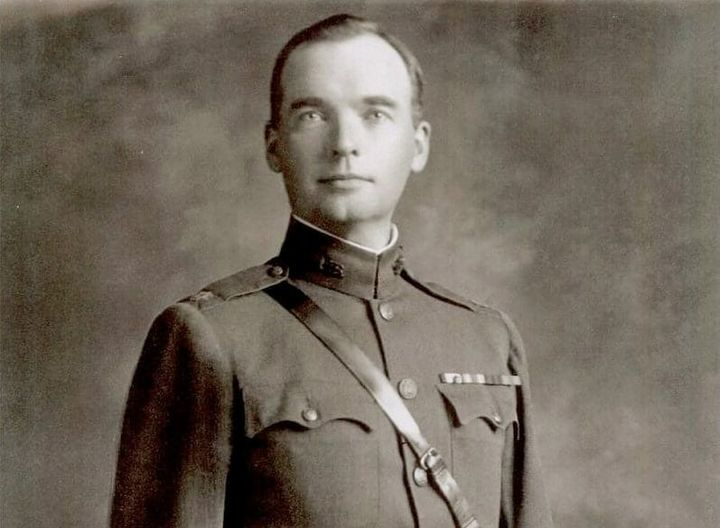
By Ken Zurski
After a court martial for violating the 96th Article of War which prohibits public criticism of the military by an officer, Malcolm Wheeler-Nicholson left the US Calvary in 1923 and became a pulp writer and entrepreneur instead.
While looking for a distinctive character to highlight his new Detective Comics series, Wheeler-Nicholson sent a letter to comic book writer Jerry Siegel.
“We want a detective hero called ‘Slam Bradley’” he wrote. “He is to be an amateur, called in by the police to help unravel difficult cases.”
Siegel and co-creator Joe Shuster used “Slam Bradley” as a trial run for another character they thought had more appeal.
They named the new character “Superman.”
‘Gentleman’ Jim Fisk, Jay Gould, the Greedy Gold Takeover, and How President Grant Stopped It.
By Ken Zurski
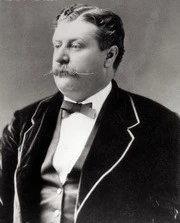
Jim Fisk was a larger than life figure in New York both physically and socially. A farm boy from New England, Fisk worked as a laborer in a circus troupe before becoming a two-bit peddler selling worthless trinkets and tools door to door to struggling farmers. The townsfolk were duped into calling him “Santa Claus” not only for his physical traits but his apparent generosity as well. When the Civil War came, Fisk made a fortune smuggling cotton from southern plantations to northern mills.
So by the time he reached New York, Fisk was a wealthy man. He also spent money as fast as he could make it; openly cavorted with pretty young girls; and lavished those he admired with expensive gifts and nights on the town. Fisk never hid behind his actions even if they were corrupt. He would chortle at his own genius and openly embarrass those he was cheating. He earned the dubious nickname “Gentleman” for being polite and loyal to his friends.
Friends like Jay Gould
A leather maker turned New York railroad owner, Gould was the youngest of six children, the only boy, and a scrawny one at that; growing up to be barely five feet tall. What he lacked in size, however, he made up for in ambition.
A financial whiz even as a young man, Gould started surveying and plotting maps for land in rural New York, where he grew up. It was tough work, but not much pay, at least not enough for Gould. In 1856 he met a successful tanner – good work at the time – who taught Gould how to make leather from animal skins and tree bark. Gould found making money just as easy as fashioning belts and bridles. He found a few rich backers, hired a few men and started his own tanning company by literally building a town from scratch in the middle of a vacant but abundant woodland. When the money started to flow, the backers balked, accusing Gould of deception. Their suspicions led to a takeover. The workers, who all lived quite comfortably in the new town they built and named Gouldsborough, rallied around Gould and took the plant back by force, in a shootout no less, although no one was seriously hurt.
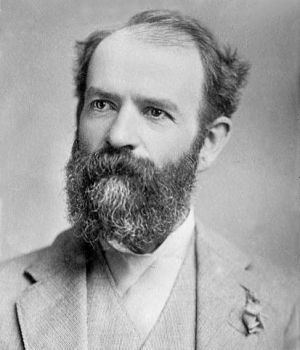
Gould won the day, but the business was ruined. By sheer luck, another promising venture opened up. A friend and fellow leather partner had some stock in a small upstate New York railroad line. The line was dying and the stock price plummeted. So Gould bought up the stock, all of it in fact, with what little earnings he had left, and began improving the line. Eventually the rusty trail hooked up with a larger line and Gould was back in business. He now owned the quite lucrative Erie Railroad.
Ten years later, in 1869, Gould got greedy and turned his attentions to gold.
Gold was being used exclusively by European markets to pay American farmers for exports since the U.S currency, greenbacks, were not legal tender overseas. Since it would take weeks, sometime months for a transaction to occur, the price would fluctuate with the unstable gold/greenback exchange rate. If gold went down or the greenback price went up, merchants would be liable -often at a substantial loss – to cover the cost of the fluctuations. To protect merchants against risk, the New York Stock Exchange was created so gold could be borrowed at current rates and merchants could pay suppliers immediately and make the gold payment when it came due. Since it was gold for gold – exchange rates were irrelevant.
Gould watched the markets closely always looking for a way to trade up. He reasoned that if traders, like himself, bought gold then lent it using cash as collateral, large collections could be acquired without using much cash at all. And if gold bought more greenback, then products shipped overseas would look cheaper and buyers would spend more. He had a plan but needed a partner.
He found that person in “Gentleman Jim Fisk.”
Fisk and Gould were already in the business of slippery finance. Besides manipulating railroad stock (Fisk was on the board of the Erie Railroad), they dabbled in livestock and bought up cattle futures when prices dropped to a penny a head. Convinced they could outsmart, out con and outlast anyone, it was time to go after a bigger prize: gold. There was only $20 million in gold available in New York City and nationally $100 million in reserves. The market was ripe for the taking and both men beamed at the prospects.
But the government stood in the way. President Grant was trying to figure out a way to unravel the gold mess, increase shipments overseas and pay off war debts. If gold prices suddenly skyrocketed, as Gould and Fisk had intended, Grant might consider a proposed plan for the government to sell its gold reserves and stabilize the markets; a plan that would leave the two clever traders in a quandary.
Through acquaintances, including Grant’s own brother-in-law, Gould and Fisk met with the president. In June of 1869, they pitched their idea posing as two concerned (a lie) but wealthy (true) citizens who could save the gold markets and raise exports, thus doing the country a favor. They insisted the president let the markets stand and keep the government at bay. Fisk even treated the president to an evening at the opera – in Gould’s private box. The wily general may have been impressed by the opera, but he was also a practical man. He told the two estimable gentlemen that he had no plans to intervene, at least not initially. But Grant really had no idea what the two shysters were up to.
A few months later, when Fisk sent a letter to Grant to confirm the president’s steadfast support, a message erroneously arrived back that Grant had received the letter and there would be no reply. The lack of a response was as good as a “yes” for Fisk. Grant was clearly on board, he thought.
He was wrong.
On September 20th, a Monday, Fisk’s broker started to buy and the markets subsequently panicked. Gold held steady at first at $130 for every $100 in greenback, but the next day Fisk worked his magic. He showed up in person and went on the offensive. Using threats and lies, including where he thought the president stood on the matter, Fisk spooked the floor.
The Bulls slaughtered the Bears.
Gold was bought, borrowed and sold. And Fisk and Gould, through various brokers, did all the buying. On Wednesday, gold closed slightly over 141, the highest price ever. In his typical showy style, Fisk couldn’t help but rub it in. He brazenly offered bets of 50-thousand dollars that the number would reach 145 by the end of the week. If someone took that sucker proposition, they lost. By Thursday, gold prices hit an astounding 150. The next day it would reach 160.
Then the bottom fell out.
At the White House, Grant was tipped off and furious. On September 24, a Friday, he put the government gold reserve up for sale and Gould and Fisk were effectively out of business. Thanks to the government sell off, almost immediately, gold prices plummeted back to the 130’s.
Many investors lost a bundle, but the two schemers got out mostly unscathed.
A Brother’s Lamentation
By Ken Zurski

On April 15 1865, the day after President Lincoln was struck down by an assassin’s bullet, Edwin Booth, a popular stage actor in New York, was told his younger brother John had pulled the trigger.
Edwin was appearing in a “successful” show at the time and immediately asked that it shut down. “The news of this morning has made me wretched,” he wrote, “not only because of my brother’s crime, but because a most justly honored and patriotic ruler has fallen.”
Edwin and his brother were estranged. Politics and ideology had separated them, as it did the rest of the country. “When I told John I voted for Lincoln,” Edwin recalled, “he expressed deep regret.”
Edwin feared for his own life after news that another brother, Junius, also an actor, had been threatened by an angry mob in Cincinnati. “Whatever calamity may befall me and mine, my country, one and indivisible, has my warmest devotion,” Edwin explained before going into hiding.
In January the following year, friends urged him to return to the stage. He reluctantly agreed. As his favorite character, Hamlet, Edwin stepped in front of a packed theater.
He was greeted by a tremendous applause.

Benjamin Franklin and the Turkey
By Ken Zurski
It’s hard to imagine anything other than the majestic bald eagle as the symbol of the United States of America. But back in the late 18th century, when good and honorable men were deciding such things, there were several considerations, mostly other animals, vying for a symbol which best represented the new country.
Was the turkey one of them?
Perhaps, but it wasn’t Benjamin Franklin who nominated the turkey, as some history lessons would later suggest. Franklin’s choice for America’s national symbol was much different than both the bald eagle and the turkey.
He did however admire the turkey.

Here’s the backstory:
In 1783, a year-and-half after Congress adopted the bald eagle as the symbol of America, Franklin saw the image of the bird on the badge of the Society of the Cincinnati of America, a military fraternity of revolutionary war officers. He thought the drawing of the bald eagle on the badge looked more like a turkey, a fair and reasonable complaint considering the image looked like, well, a turkey.
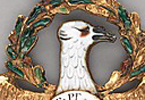
But it was the use of the bald eagle as the symbol of America that most infuriated Franklin. “[The bald eagle] is a bird of bad moral character,” he wrote to his daughter. “He does not get his Living honestly.”
It was a a matter of principal for Franklin. The bald eagle was a notorious thief, he implied. He had a point. Considered a good glider and observer, the bald eagle often watches other birds, like the more agile Osprey (appropriately called a fish hawk) dive into water to seize its prey. The bald eagle then assaults the Osprey and forces it to release the catch, grabs the prey in mid-air, and returns to its nest with the stolen goods. “With all this injustice,” Franklin wrote as only he could, “[The bald eagle] is a rank coward.”
Franklin then expounded on the turkey comparison: “For the truth, the turkey is a much more respectable bird…a true original Native of America who would not hesitate to attack a grenadier of the British Guards who should presume to invade his farmyard with a red coat on.”

Franklin’s suggestion of the turkey as the nation’s symbol, however, is a myth. He never suggested such a thing. He only compared the bald eagle to a turkey because the drawing reminded him of a turkey. Franklin’s argument was in the choice of the bald eagle and not in support of the turkey, an idea he called “vain and silly.”
Some even claim his comments and comparisons were slyly referring to members of the Society, of whom he thought was an elitist group comprised of “brave and honest” men but on a chivalric order, similar to the ruling country to which they helped defeat. This might explain why Franklin’s assessment of the bald eagle in the letter is based solely on human behavior, not a bird’s.
Perhaps when Franklin made the disparaging comments against the bald eagle he was also harboring a nearly decade old grudge.

In 1775, a year before America’s independence, Franklin wrote the Pennsylvania Journal and suggested an animal be used as a symbol of a new country, one that had the “temper and conduct of America,” he explained. He had something in mind. “She never begins an attack, nor, when once engaged, ever surrenders;” he wrote. “She is therefore an emblem of magnanimity and true courage”
Eventually the image Franklin suggested did appear on a $20 bill issued in 1778, adopted for use as the official seal of the War Office, and may have been the inspiration for the Gadsden flag with the inscription, “Don’t Tread On Me.”
But it never officially became the preferred symbol of the new country.
That belongs to the bald eagle.
Franklin’s choice: the rattlesnake.

The Gettysburg Address We Don’t Remember
The beginning and final sentences of Edward Everett’s speech on November 19, 1863 at the dedication of Gettysburg’s National Cemetery:
“STANDING beneath this serene sky, overlooking these broad fields now reposing from the labors of the waning year, the mighty Alleghenies dimly towering before us, the graves of our brethren beneath our feet, it is with hesitation that I raise my poor voice to break the eloquent silence of God and Nature..
..But they, I am sure, will join us in saying, as we bid farewell to the dust of these martyr-heroes, that wheresoever throughout the civilized world the accounts of this great warfare are read, and down to the latest period of recorded time, in the glorious annals of our common country there will be no brighter page than that which relates THE BATTLES OF GETTYSBURG.”
The Boston orator was the obvious choice for the occasion. During his 40-year career as professor, diplomat, and statesman, he had consistently dazzled audiences with his brilliant oratory. On November 19 in Gettysburg, Everett held the crowd “spellbound” for nearly two hours. But his words are not the ones that are remembered today.
Shortly after Everett’s speech, President Abraham Lincoln spoke for less than three minutes.

The following is from Ted Widmer, “The Other Gettysburg Address” New York Times http://opinionator.blogs.nytimes.com/…/the-other-gettysbu…/…
“Edward Everett had spent his life preparing for this moment. If anyone could put the battle into a broad historical context, it was he. His immense erudition and his reputation as a speaker set expectations very high for the address to come. As it turned out, Americans were correct to assume that history would forever remember the words spoken on that day. But they were not to be his. As we all know, another speaker stole the limelight, and what we now call the Gettysburg Address was close to the opposite of what Everett prepared. It was barely an Address at all; simply the musings of a speaker with no command of Greek history, no polish on the stage, and barely a speech at all – a mere exhalation of around 270 words. Everett’s first sentence, just clearing his throat, was 19 percent of that – 52 words. By the time he was finished, about 2 hours later, he had spoken more than 13,000.”
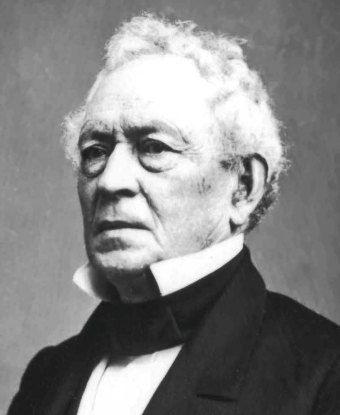
(Quotes and text culled from various internet sources including http://www.massmoments.org)
Hershey’s Chocolate Challenge
By Ken Zurski
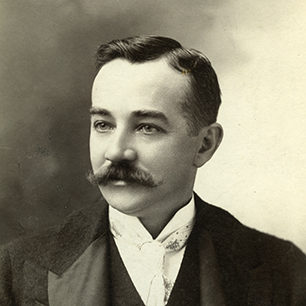
In 1903, candy maker and entrepreneur Milton Hershey invented a recipe for milk chocolate that he planned to sell en mass to Americans.
Hershey certainly did not discover the benefits of chocolate (which dates back to the Aztecs in 450 BC) or the first chocolate bar for that matter (a cocoa butter based solid used by the Dutch in the early 19th century), but what he did do is mass produce it.
Hershey had successfully opened up a caramel factory in Lancaster, Pennsylvania, but producing chocolate in large quantities proved to be a major challenge. The problem was in the process. Specifically, how does one heat sugar and milk in large kettle pots without burning the mixture or making a sticky goo?
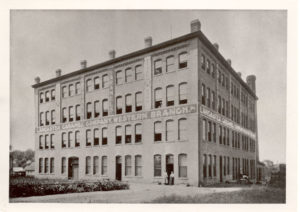
Hershey and his team worked for hours, day thru night, trying to figure it out. They experimented with less ingredients, then more. They tried whole or skim milk. They even changed the breed of the cow hoping for better consistency. Nothing seemed to work. Every experiment they tried met with the same result: lumpy, burnt residue – not creamy delicious chocolate.
Hershey knew financially millions of dollars were at stake. So he hired a chemist. But even that failed. Desperate, Hershey called on a trusted worker at the caramel factory to give it a go. The worker had an idea. He focused on the cooking rather than the mixing. He combined the milk, sugar and other ingredients and adjusted the temperature; slowly cooling it down then heating it up again to reduce boiling and burning.
It worked.
“Look at the beautiful batch of milk,” Hershey exclaimed.
Not only did the new batch taste good, but it was creamy and smooth too.
Inspired by the new process, Hershey decided to produce larger pieces to sell.
Instead of small bites, like “kisses,” Hershey envisioned a chocolate piece that was longer and offered multiple bites in one.
He called it the Hershey Bar.

(Sources: Hershey: Milton S. Harshey’s Extraordinary Life of Wealth, Empire, and Utopian Dreams – Michael D’Antonio; various internet)
Q&A: Author Ken Zurski on his Award Winning Book ‘UNREMEMBERED’

Author Ken Zurski (Peoria Stories & The Wreck of the Columbia) answers questions about his book UNREMEMBERED Tales of the Nearly Famous and the Not Quite Forgotten a Readers’ Favorite award winner in the category of “Non-Fiction Adventure”
Unremembered is an interesting word. Why did you choose it?
I really liked it for one. It’s not used very often, but I saw it once and immediately knew it fit what I was trying to do.
And that would be a blog of forgotten history stories?
Well, yea, sort of. I was thinking a book first and thought it would make a terrific title. I had stories but wasn’t sure of the direction. I had a list of people and events I’d read about and wanted to write so I started the blog first and now here we are two years later and finally a book.

The book is different from the blog in that it tells multiple stories but within the context of a flowing or entwined narrative. Was that planned?
Mostly, yes. I didn’t want to do a bathroom book with just a bunch of articles. The stories on the blog are short so there would have to be a hundred or more in the book. I began thinking of stories intertwining and that sparked my interest in telling stories of people and events and their connections to each other, something I did in an abbreviated way with my book Peoria Stories. Some of the connections are more obvious than others and there are four parts to Unremembered so there are different themes, but with a thread that connects them all.
Some people seem to pop up and leave and others reemerge. Is this because of their connections?
Oh, Yes. There are probably 70 people featured in the book all under the same guise of being nearly famous or not quite forgotten. Some appear briefly others more prominently.
George Francis Train is one character that seems to have his hand in everything. Did you know that going in?
Oh, of course. Train was probably the person that best exemplifies what I was trying to convey in Unremembered. He was a resourceful figure and had some pretty amazing accomplishments in his lifetime, but he tried too hard to be important. Eventually his antics led many to believe he was insane. Others greatly admired him. In the end though, hardly anyone remembers him.
So he fits under the category of “nearly famous”?
Yes, I suppose, in how time treated his story. Today, he’s certainly not famous when compared to others, but in the later half of the 19th century he was a very famous figure, prominently in the news and influential and controversial too.

And Nellie Bly, the journalist, where does she fit in?
She is sort of like Train but never seemed to push herself into the spotlight like Train did. Certainly traveling around the world is a heady stuff for a woman at the time, but she did it to further her status as a journalist, not become a celebrity. That she became famous was a bonus.
So she is not quite forgotten?
Exactly her name comes up in books about the early history of journalism. But most people don’t know all of her amazing story.
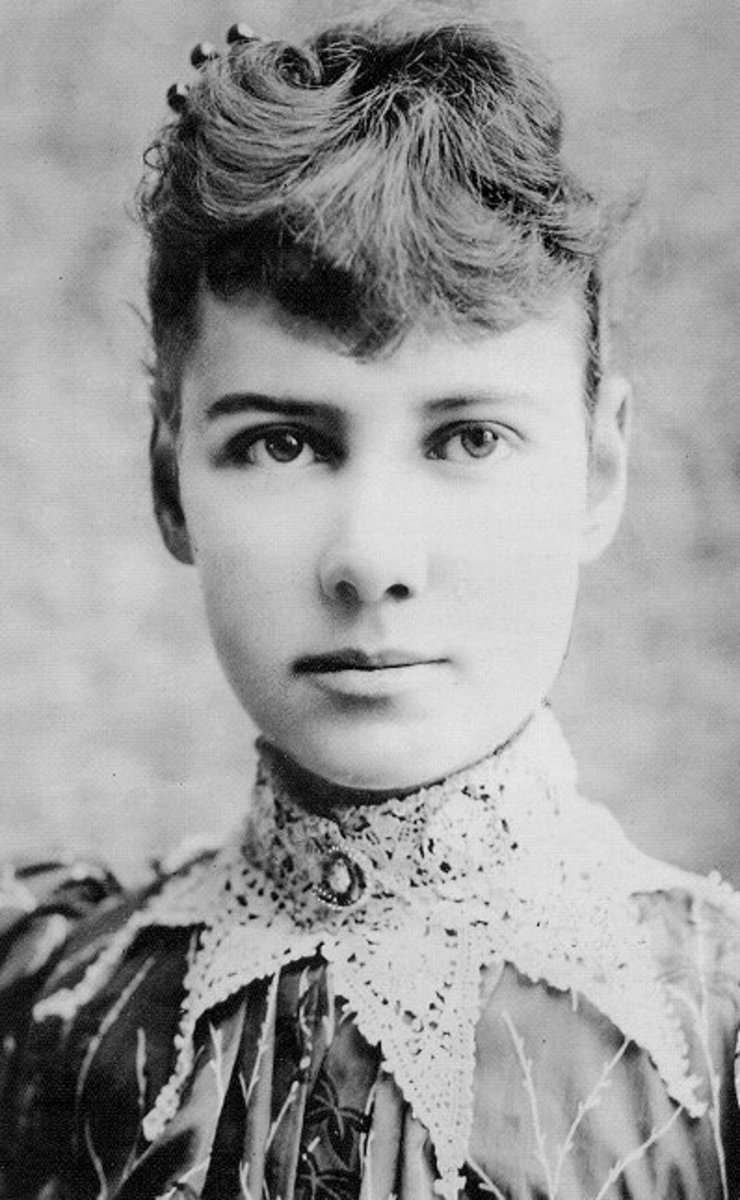
Train and Bly seems to be main characters but don’t enter the book until the third part, especially Bly. Was this by design?
Sort of. Train has a connection to a man we meet in the first part Cornelius Vanderbilt, who has a connection to a steamboat disaster in New York whose tragic events has a connection to a young printer, it just follows along. Train is actually in every part in some way.
Niagara Falls is an interesting subject? How did you choose that to continue the narrative in Part Two?
Beyond the nature part of the beast, there’s a human story to the Falls which really interested me. Why did people risk their life to challenge it? So many stories emerged I had to tell it.
And yet, somehow it ties into balloon travel which ties into the birth of transportation
Yes, Part Three is about reaching new limits and new heights in transportation both by water and air. Some interesting and forgotten stories can be found here beyond the more familiar names like the Wright Brothers, Charles Lindbergh and even the Titanic.
So there is an “unremembered” ship?
There is. Again famous for it’s time, but mostly forgotten now.
And then we’re back to a tragedy in Part Four?
Yes, the Great Chicago Fire.
And a familiar face emerges?
Yes, Train has a history there as well.
It’s all very fascinating stuff and the book covers a lot of ground. Were you ever surprised by the connections?
Most everything in the book is included because of the connections, but there were a few that were unexpected and came about while during research.
They call that writer’s luck, right?
Exactly



